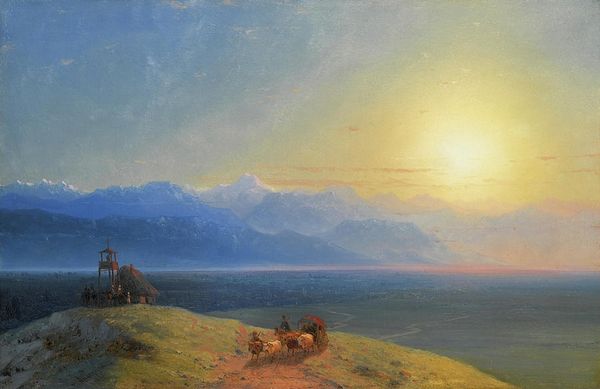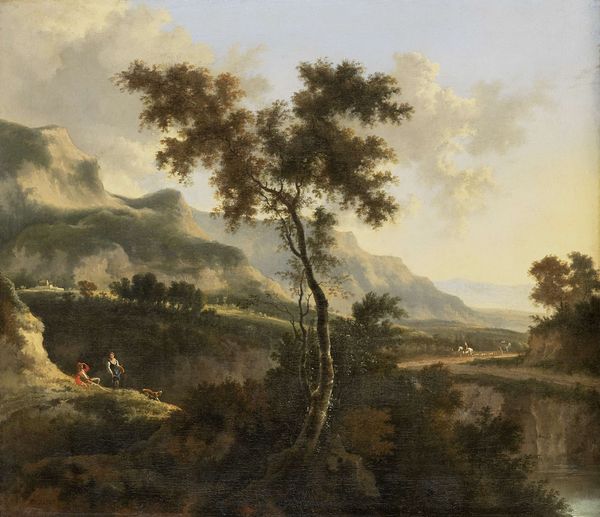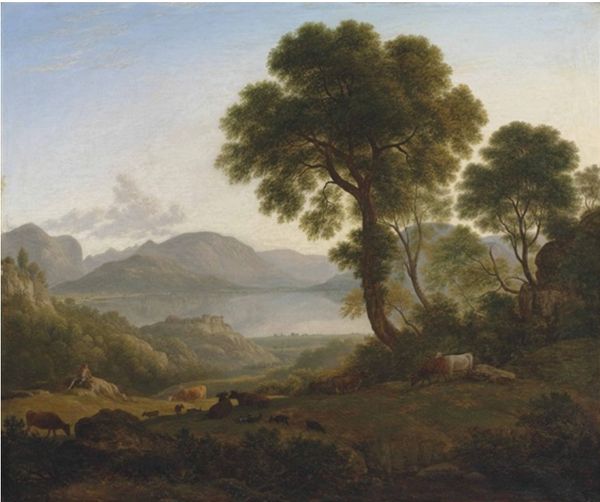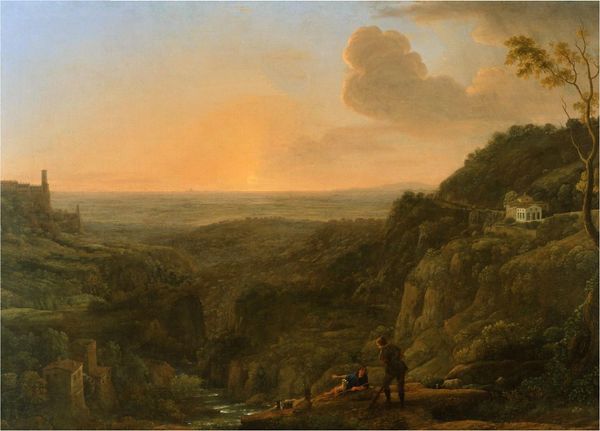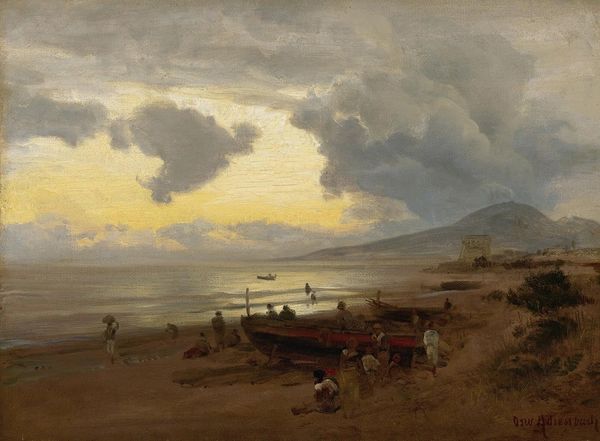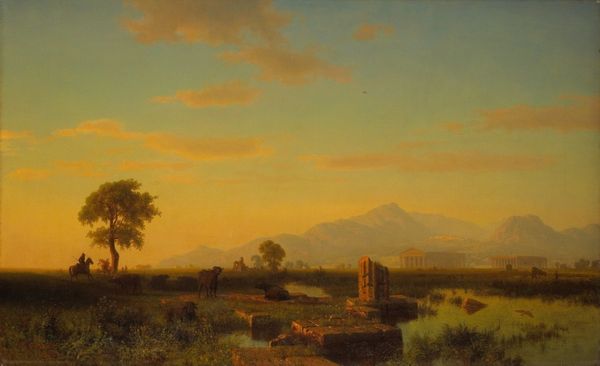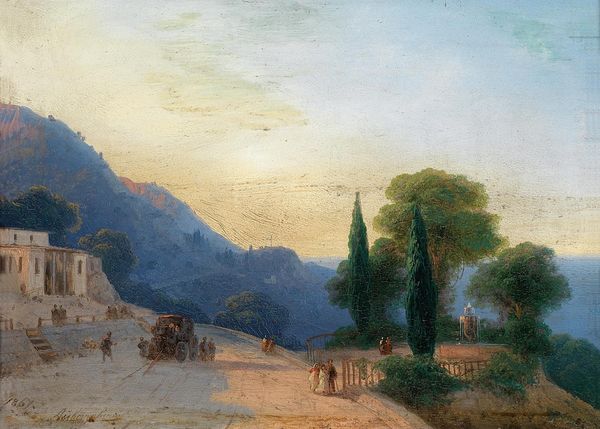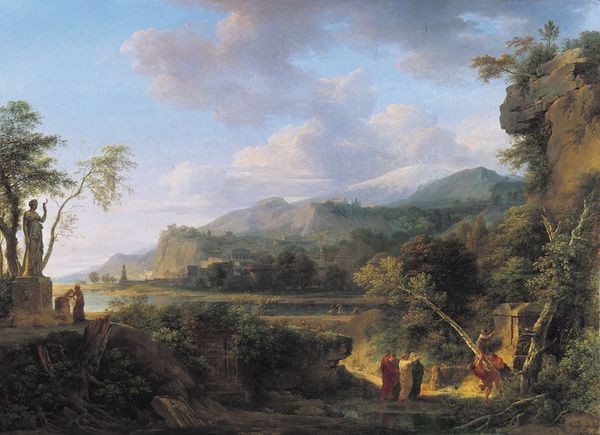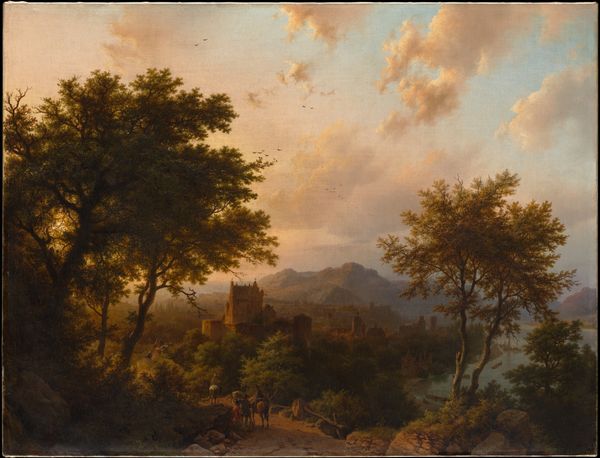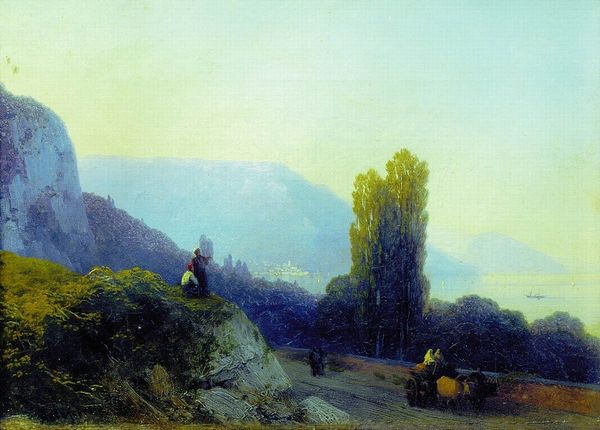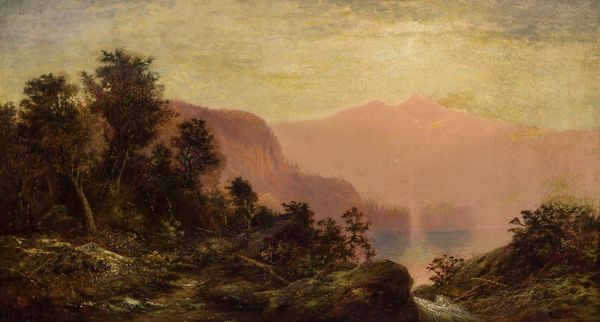
#
impressionist painting style
#
landscape
#
possibly oil pastel
#
oil painting
#
acrylic on canvas
#
underpainting
#
painting painterly
#
animal drawing portrait
#
watercolour illustration
#
watercolor
#
environment sketch
Copyright: Public Domain: Artvee
Curator: Right, so before us, we have "The Road to Gurzuf, Crimea" by Ivan Aivazovsky, painted around 1878. Editor: My goodness, it just washes over me – the quiet stillness, the soft pastel colors, like a faded memory or a dream. Curator: Exactly! And let's talk about those "soft pastel colors". Aivazovsky was a master of glazing—thin, translucent layers of oil paint. He often worked alla prima, directly onto the canvas to capture the fleeting effects of light. I'd bet there were workers, too. Transporting materials. Pigments were pricey back then. Editor: And he conjures the most ethereal atmosphere. I feel drawn in by the landscape itself. See those tall slender trees – like a gentle echo in this vista. Curator: Those are Italian cypress trees, aren't they? Notice how he contrasts the horizontal sweep of the coastline with the verticality. And Aivazovsky, though celebrated in his lifetime, often faced criticism for producing what some saw as idealized, sentimental landscapes. Do you feel this idealization prevents an accurate record? Editor: Not at all. Instead, I experience a desire fulfilled. A world cleansed of conflict and compromise where everything glows as it could and should. It might reveal less about 1878 Crimea, however more about Aivazovsky’s yearning spirit. The composition is almost a stage set, you know? Like he's arranged the world just so to convey emotion. Curator: Emotion, definitely. It raises interesting questions. Was there a consumer base that hungered for images confirming their dominion? I’d argue these tranquil paintings masked colonial operations on the Crimean Peninsula. Still, look at the sheer number of pieces Aivazovsky completed, the business. The labor alone… Editor: But is the “business” invalidating his art? Even if it suited tastes of the time, his masterful rendering, color work, his capture of air, makes this so captivating. For all those potential social undercurrents that seep into these painted realities, it is pure visual poetry. Curator: Maybe so, maybe so... Editor: It’s been enlightening! A painting is far more than meets the casual eye, after all. Curator: Indeed. Art is inseparable from the socio-economic conditions of its production. An important thing to always remember when trying to place the “visual poetry."
Comments
No comments
Be the first to comment and join the conversation on the ultimate creative platform.

